AO Edited
Sala dei Giganti (Chamber of the Giants)
A room filled with frescos that make it seem like the walls are crumbling down while giants die in despair.
The Palazzo del Tè was built in the 16th century as a leisure palace for Federico II Gonzaga, Marquess of Mantua. Italian artist and architect Giulio Romano, who had been a student of Raphael, designed the building. Today it is widely considered to be Romano’s masterpiece.
The palace was made to impress visitors and displays examples of dropped triglyphs, a secret garden with a fake grotto, and nowadays a small Egyptian museum. The most impressive decorations are the monumental frescos. The most impressive and iconic is known as the Sala dei Giganti (Chamber of the Giants).
The fresco that covers the walls and the ceiling of this room was painted between 1532 and 1535. It tells the story of the fall of the giants, as described by the Latin poet Ovid in his Metamorphoses. The god Jupiter is pictured on the ceiling, surrounded by the entire Roman cosmogony. The painting shows the moment he threw his lighting to destroy the giants. On the surrounding walls, there are images of crumbling buildings and desperate giants trying to escape.
According to art historians, Romano wanted it to be an immersive experience. Stepping into the Chamber of Giants makes it feel like you are stepping into the myth. The panoramic painting has no obvious beginning or endpoint and includes details like crumbling walls, heavy clouds, and pain-twisted faces on the giants.
The particular structure of the room allows two people to hear each other while whispering on the opposite corners.
Community Contributors
Added by
Edited by
Plan Your Trip
The Atlas Obscura Podcast is Back!


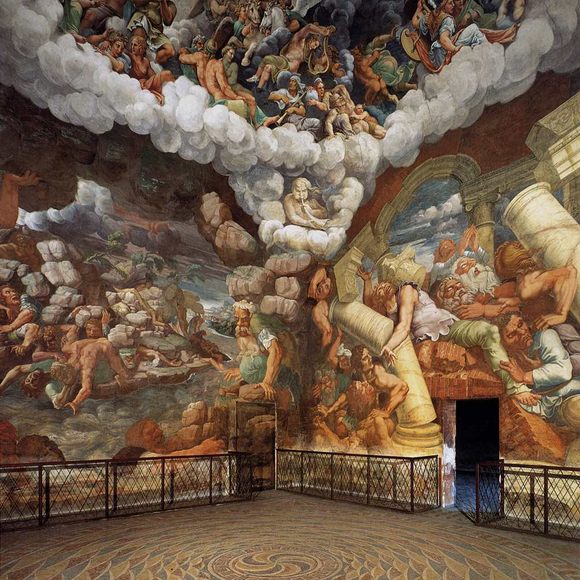

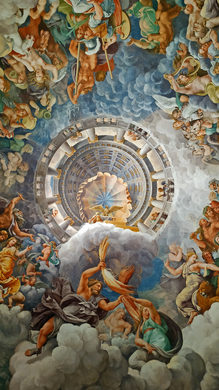
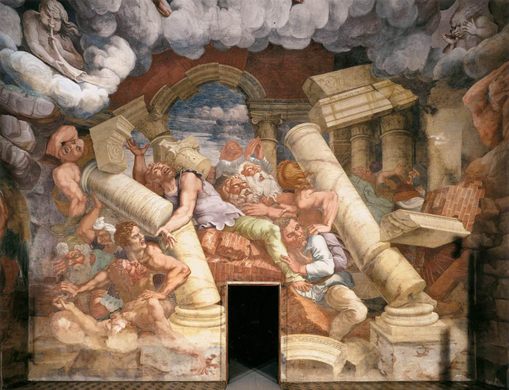
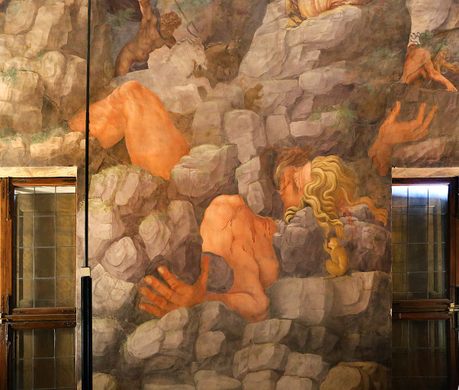





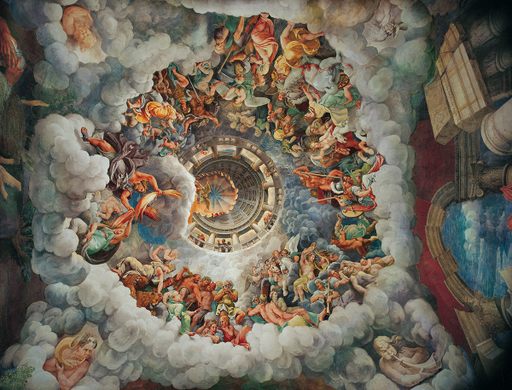







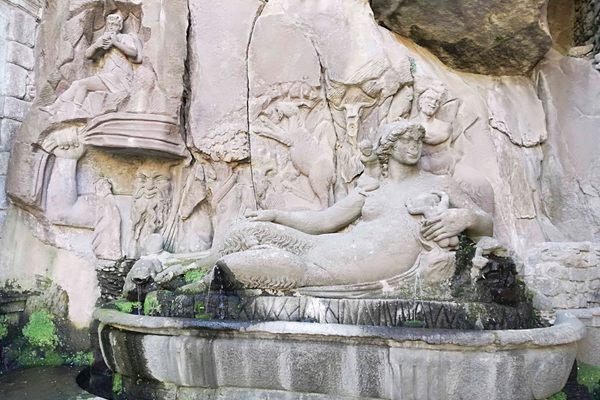

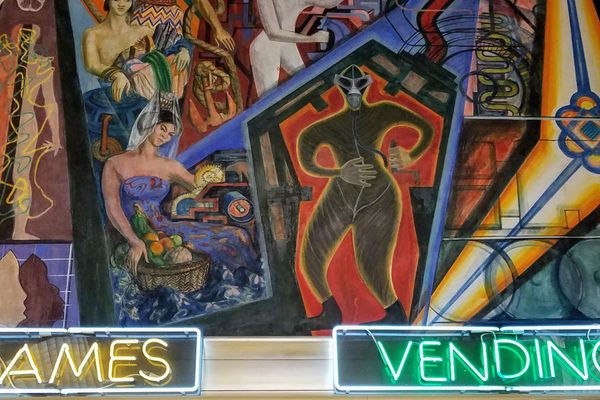


Follow us on Twitter to get the latest on the world's hidden wonders.
Like us on Facebook to get the latest on the world's hidden wonders.
Follow us on Twitter Like us on Facebook